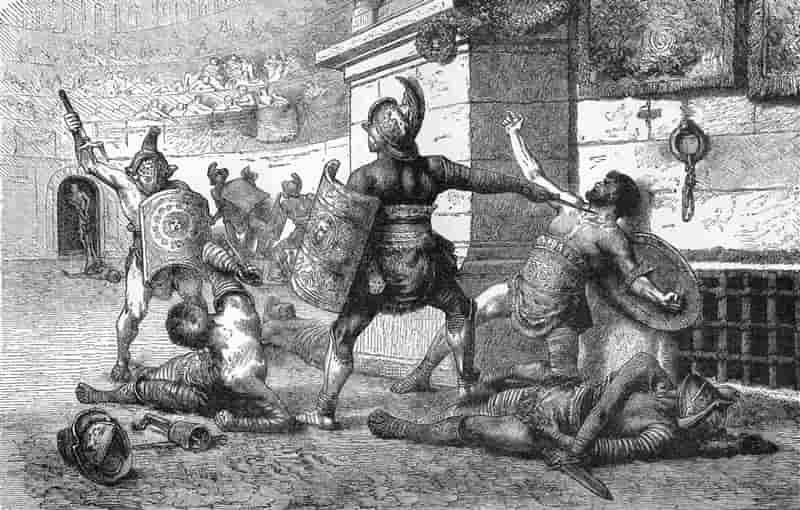The image we have of gladiators is that of men condemned to fight until their last breath, but it is one of many myths that surround the world of gladiators in ancient Rome.
Although true massacres did take place, generally these were applied to those sentenced to death, while gladiators were trained fighters who most of the time survived the fighting and could gain a lot of fame and eventually their freedom.
A Lucrative investment
Gladiators were mostly slaves, but that doesn’t mean their lives were disposable. For the lanista, the owner of a gladiator school, each fighter was a valuable investment since he had to take care of feeding him to keep him fit, paying for his medical care, training him and equipping him for the fight.
Therefore, he was the first interested party for his gladiators to survive, as training and maintaining them was very expensive. Also because of this, a gladiator could have better nutrition and health than free but very poor people.
When games were organized, the sponsor paid the lanista the rent for the services of his gladiators.
These, despite being slaves, received a salary for fighting: the emperor Marcus Aurelius set this amount between 20 and 25% of what the lanista earned for his rent.
Over time they could obtain their freedom in two possible ways: buying it with what they had saved or, if they won many fights, receiving it as a rare prize along with a wooden sword called Rudis, the proof that they had won freedom in their own strength.
At the time that a sponsor rented the gladiators, he was responsible for what might happen to them: If a fighter died it was no longer considered a rental but a sale, in a kind of slave version of “if you break it, you pay it”.
According to regulations in force in the 2nd century AD, a time of particular popularity for gladiatorial combat, this payment was 25 times higher than the rental price of the fighter.
Therefore, it was also not in the sponsor’s interest if the gladiator died if not to satisfy the public’s thirst for blood.

Win the favor of the public
But not even the public, most of the time, wanted the death of a gladiator if he fought well and showed courage and determination in combat.
It must be considered that, for the Romans, gladiators were athletes even when they were slaves and represented a quality highly valued in ancient Rome, courage in fighting.
So even if he did lose a fight, the public was often in favor of sparing his life to fight another day – after all, no one can always win.
The fighting was not necessarily to the death, but until one of the combatants lost his weapons or surrendered.
When a gladiator was in trouble, he could declare his surrender: this was usually indicated by raising the left arm with the index finger extended, dropping the shield, or placing the sword behind the back.
At this point the fight was immediately interrupted and it was up to the sponsor to decide the fate of the loser.
Although the final verdict was his, the reaction of the public was decisive, since whoever organized the games did it precisely to gain popularity.
Contrary to widespread myth, the method of voting for death with a clenched fist and thumb down, or for life with the thumb up, was not common practice.
The reason is simple: in medium-sized arenas, from the distance between some stands it was impossible to get a clear idea of what the public was voting unless it was by a large majority.
This gesture did exist but on the part of the sponsor, since then there was only one hand to look at, and even in this case it was not a universal gesture.
It was more common for the decision of both the public and the sponsor to be expressed verbally, with the words mite (free him) or iugula (cut him down).
The death rate for gladiators is difficult to determine, but archaeological studies typically place it at between 10 and 20 percent.
Although it may seem very high, it was much lower than that of other shows such as horse racing, since fighting was a less common spectacle and usually a gladiator would fight between two and five times a year.
These deaths did not always occur in combat, as despite medical care there was a high risk of the wounds becoming infected .
So while the gladiator’s life was undeniably tough, for those who fought bravely and managed to survive long enough, in the end it offered less fatal expectations than is often thought.
Source: National Geographic






